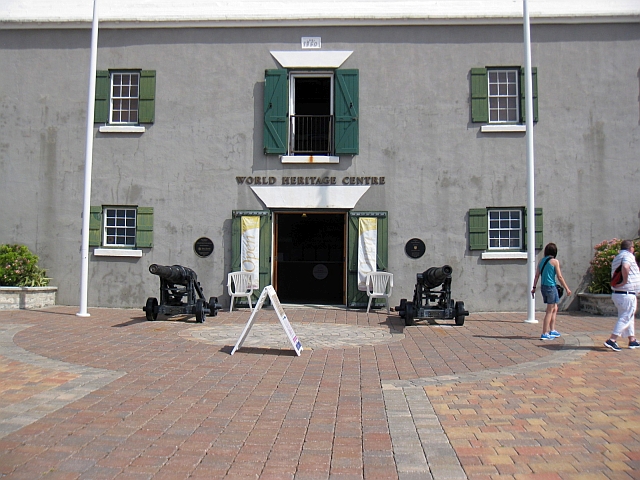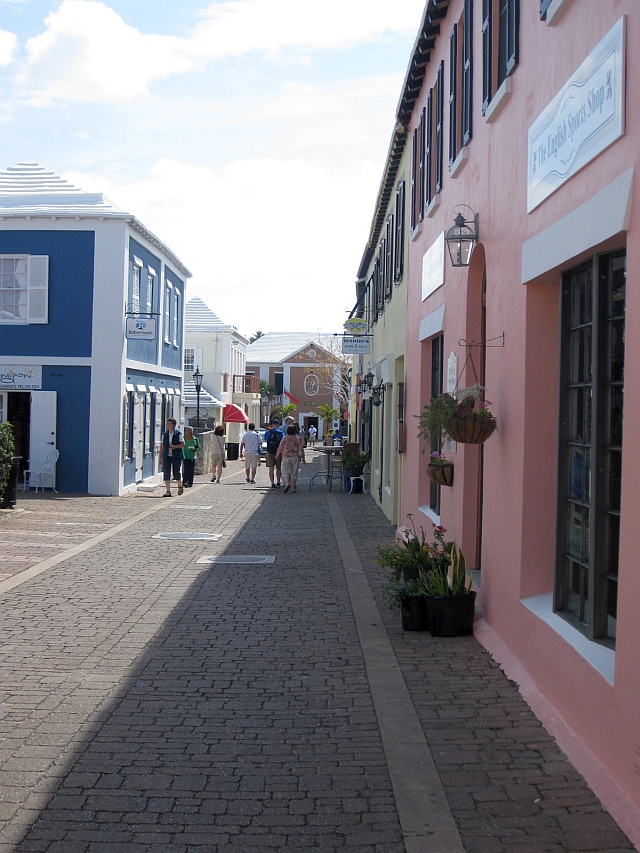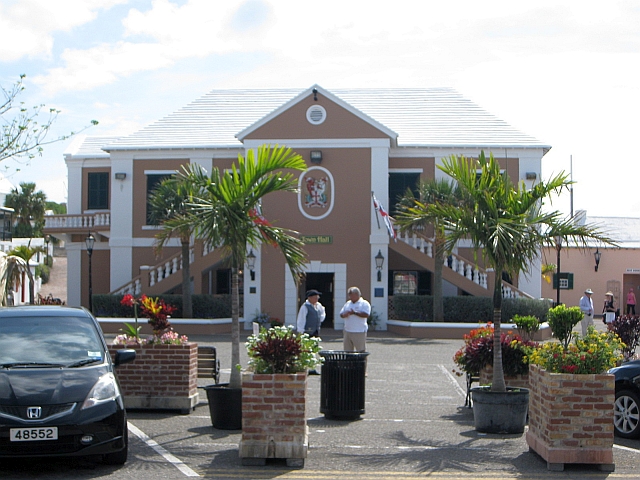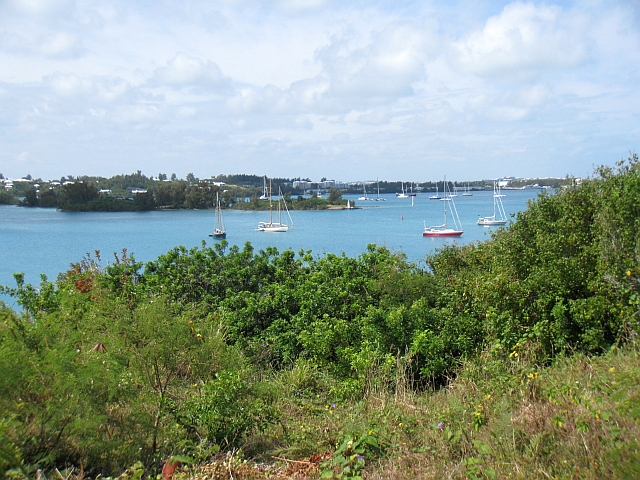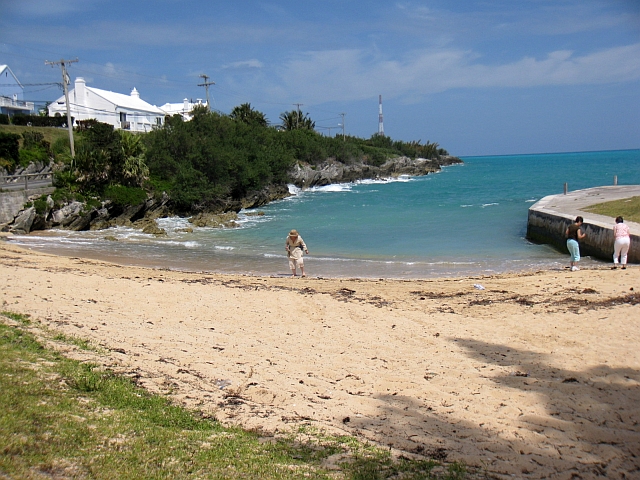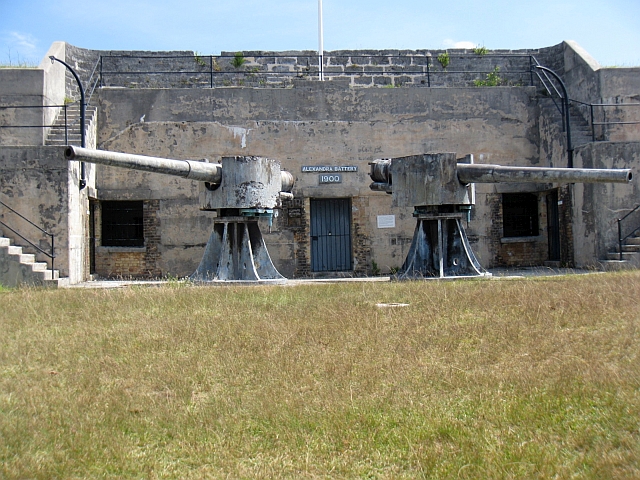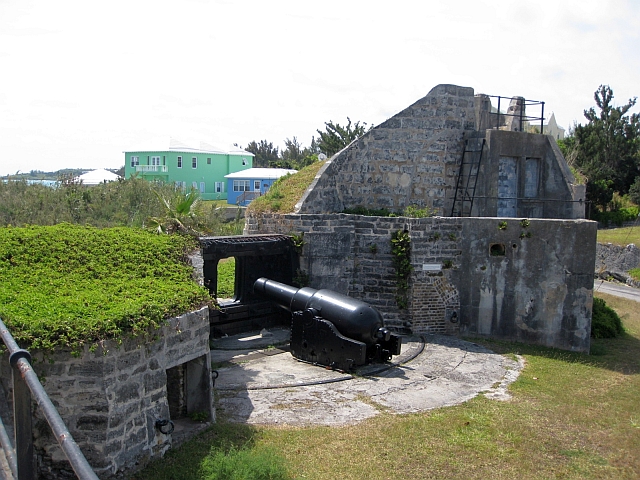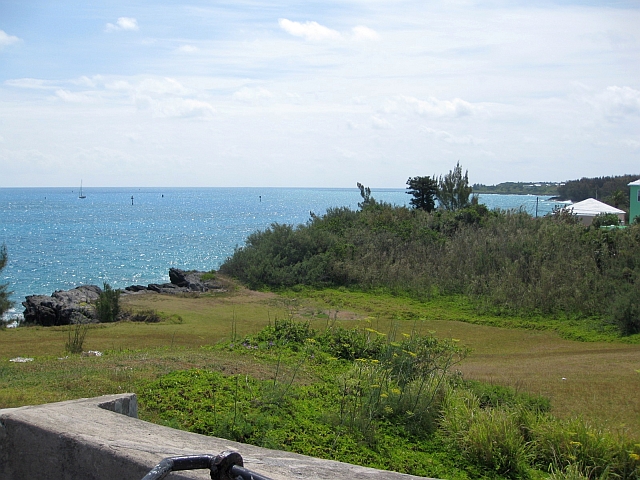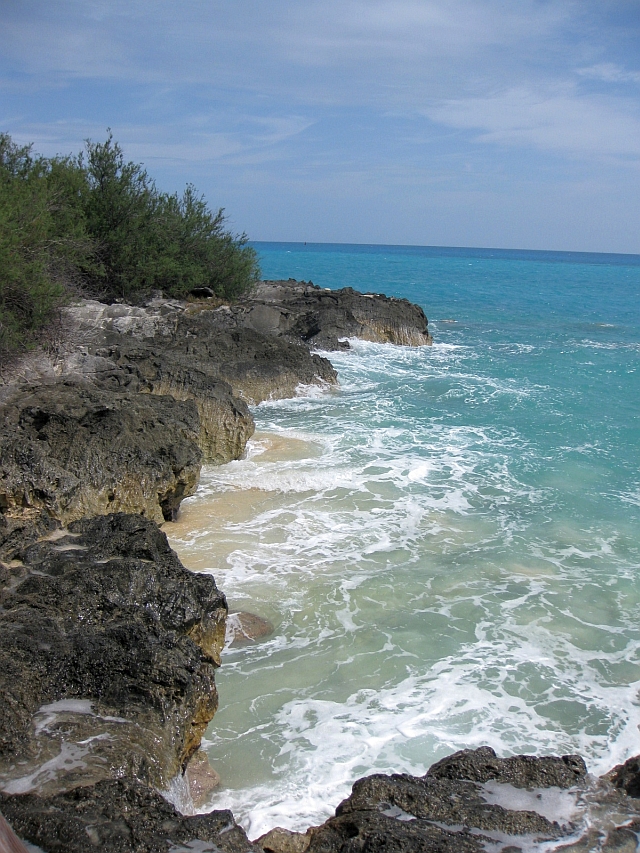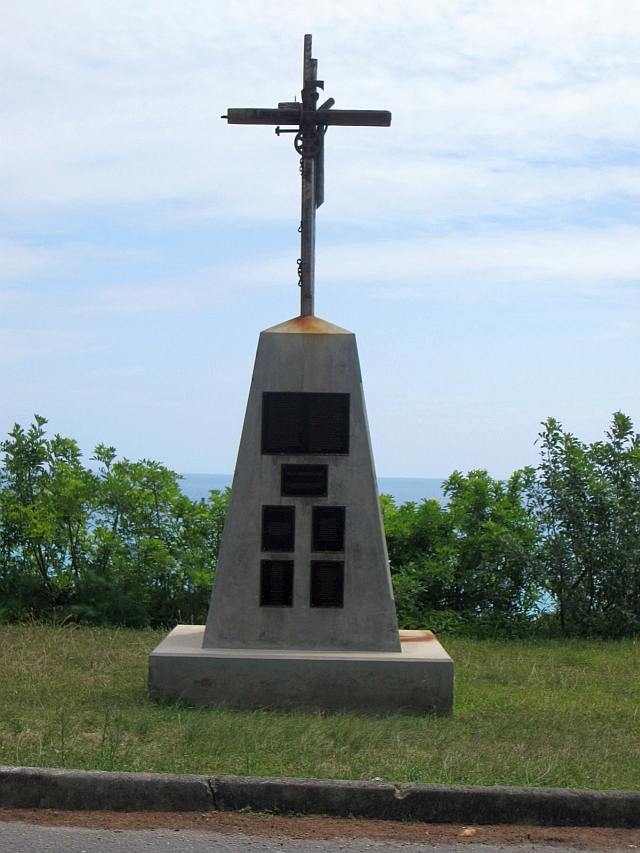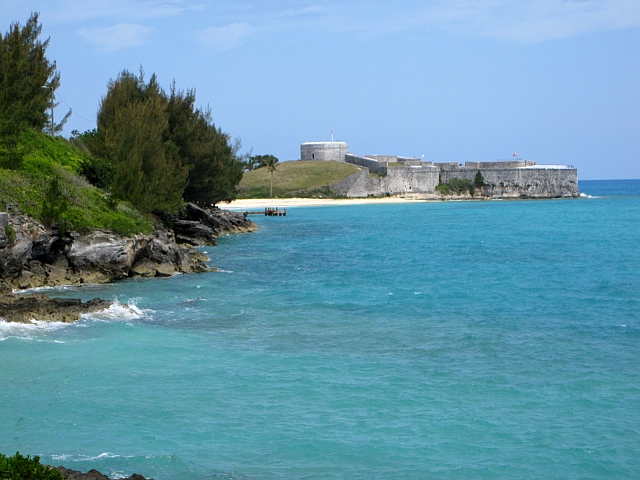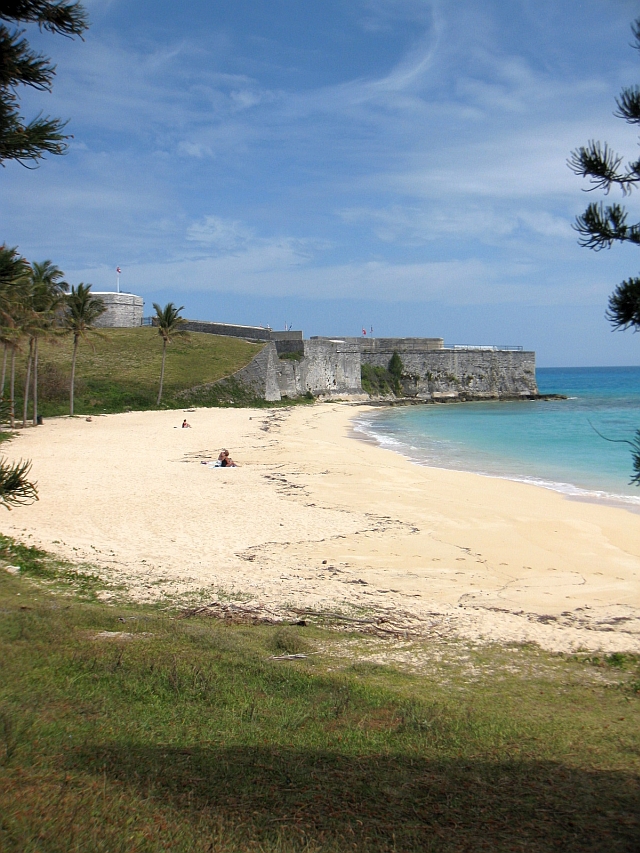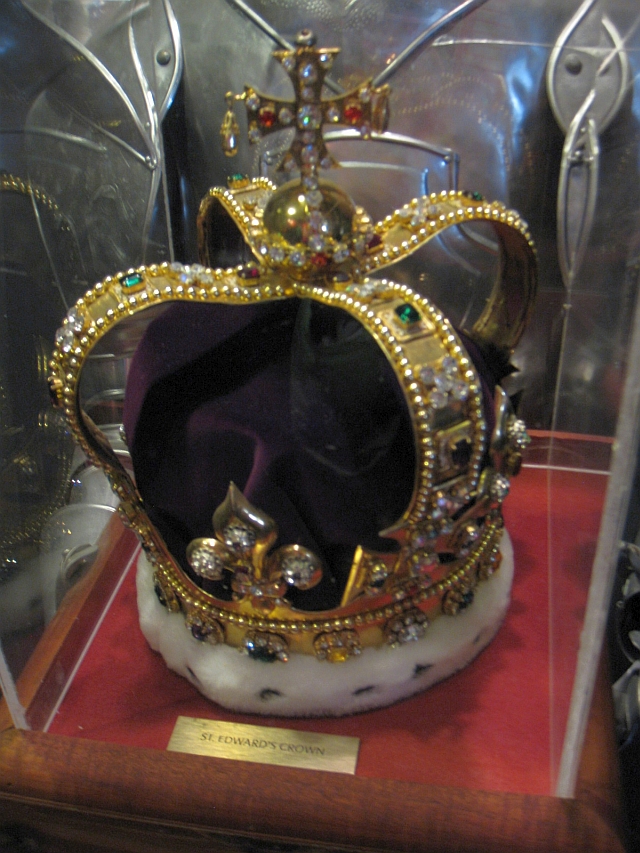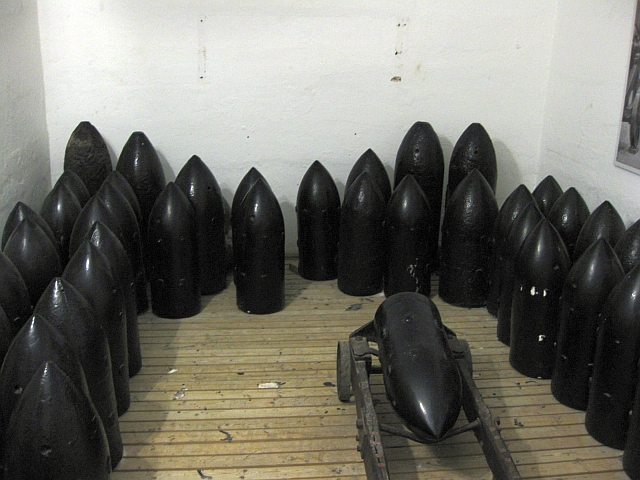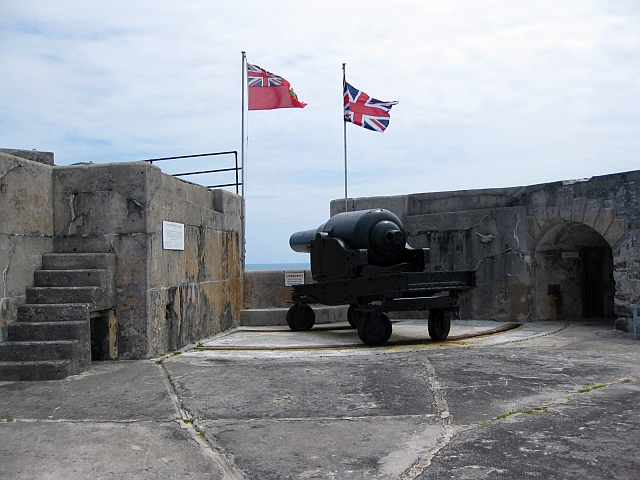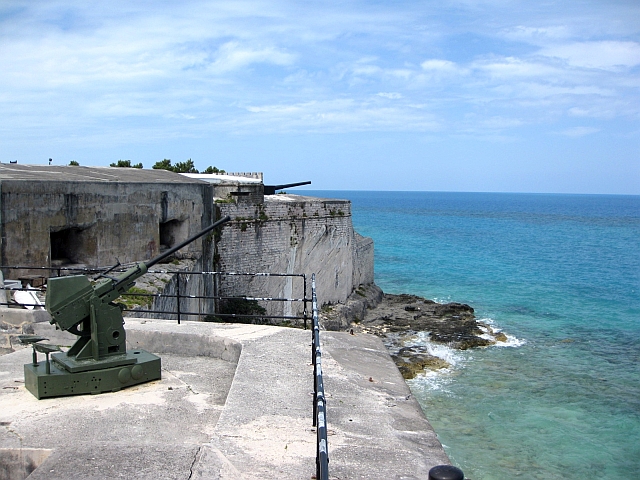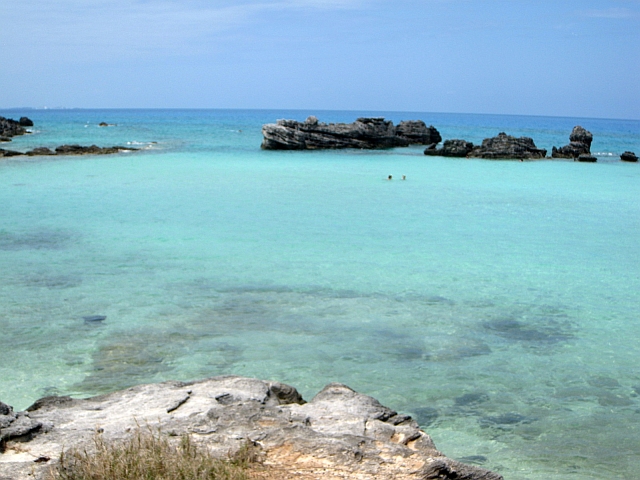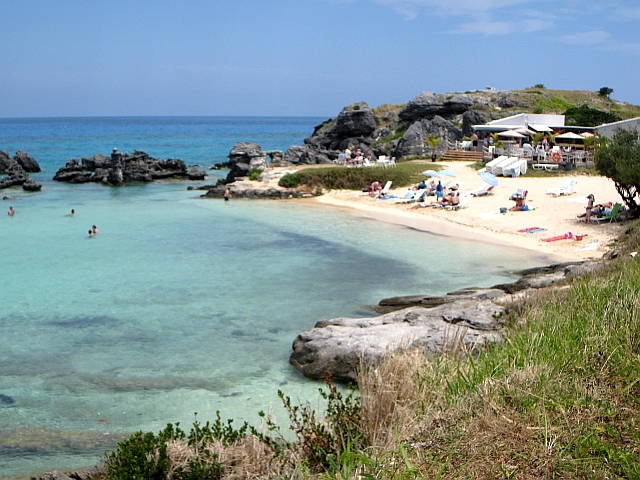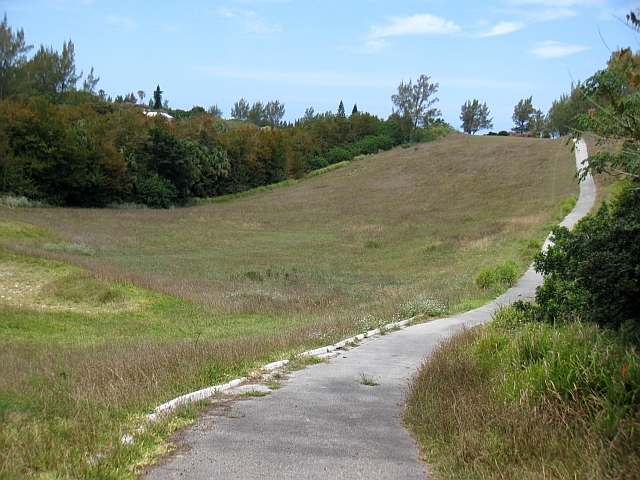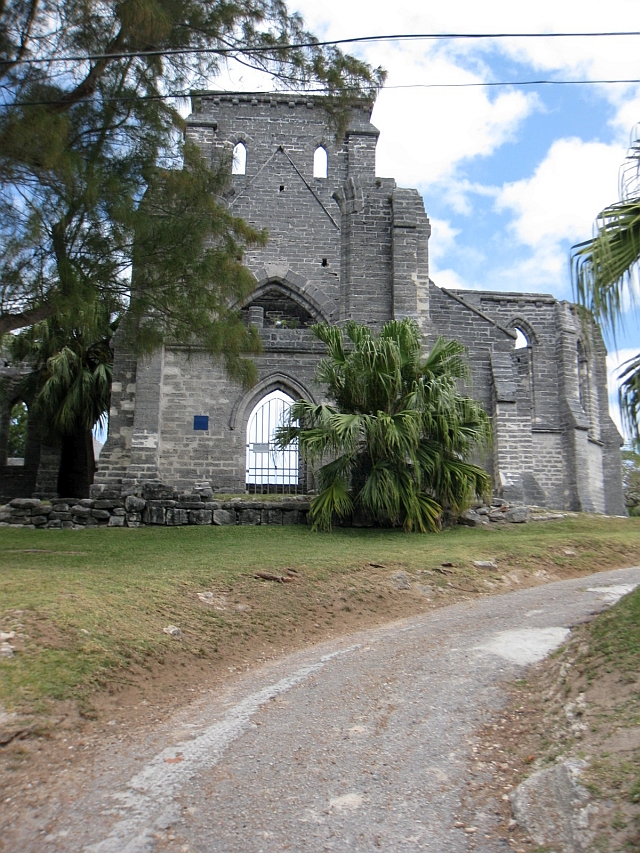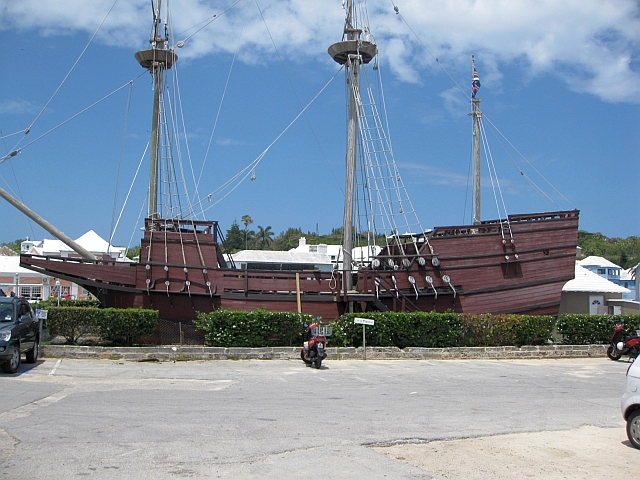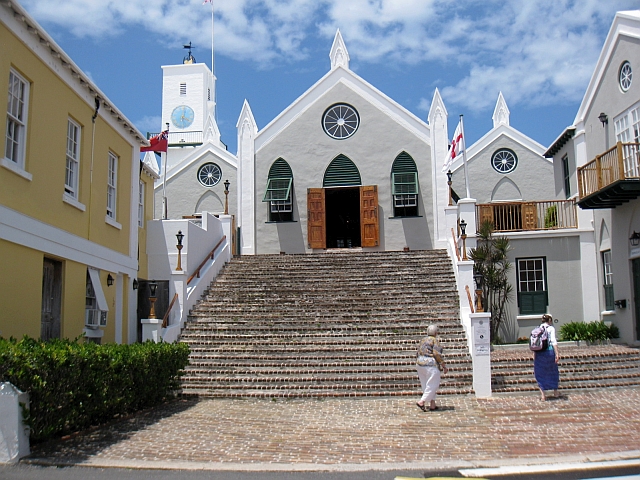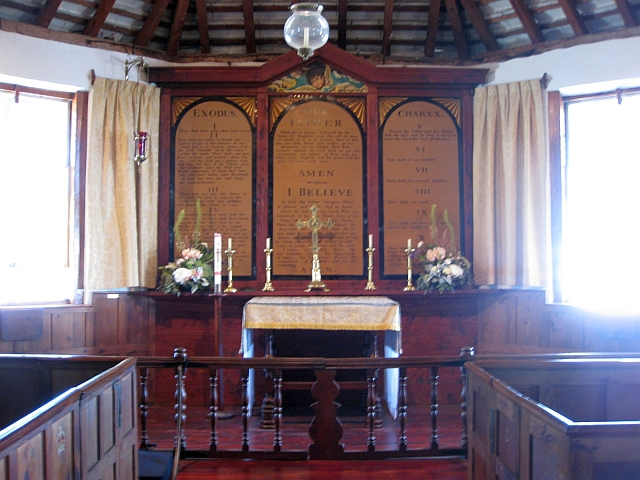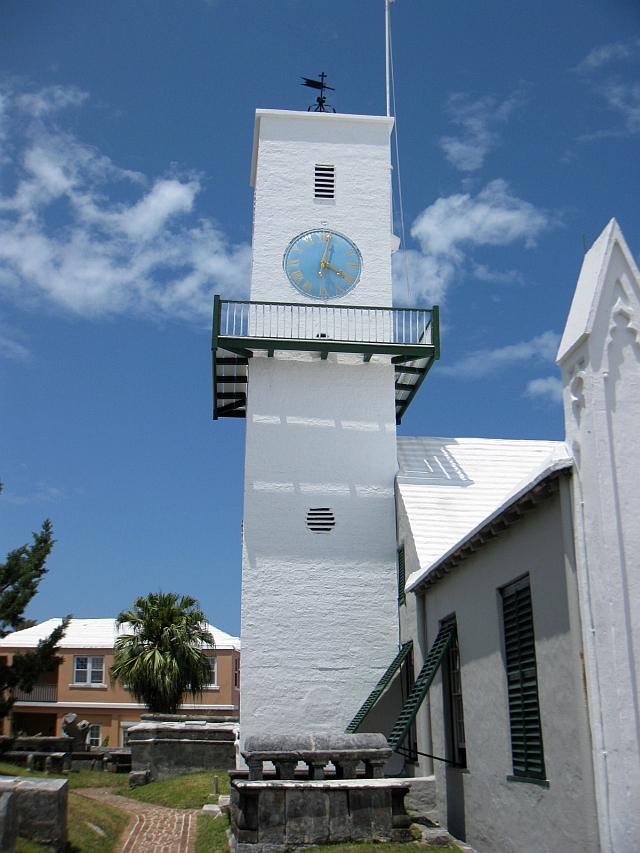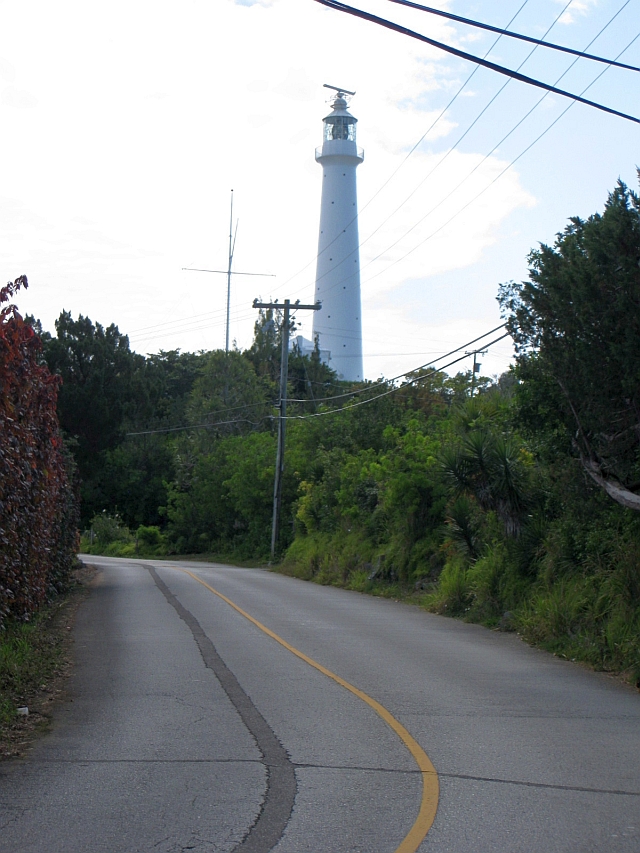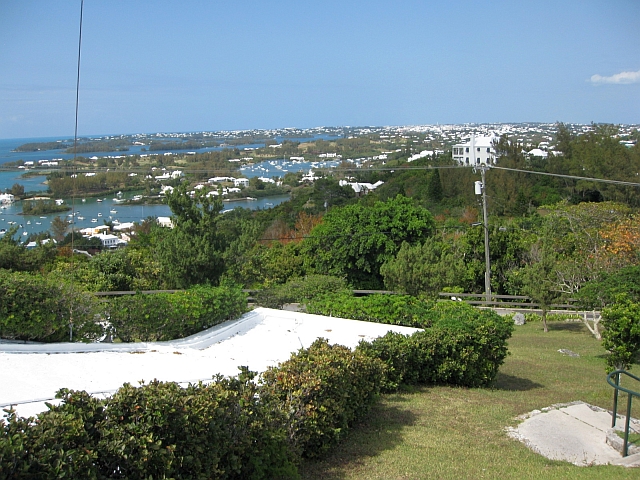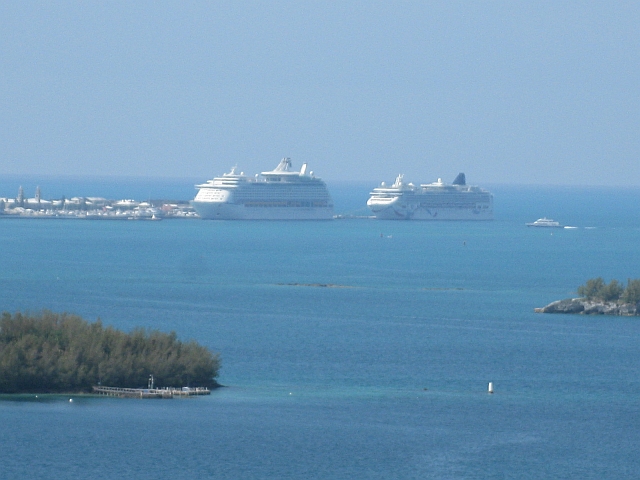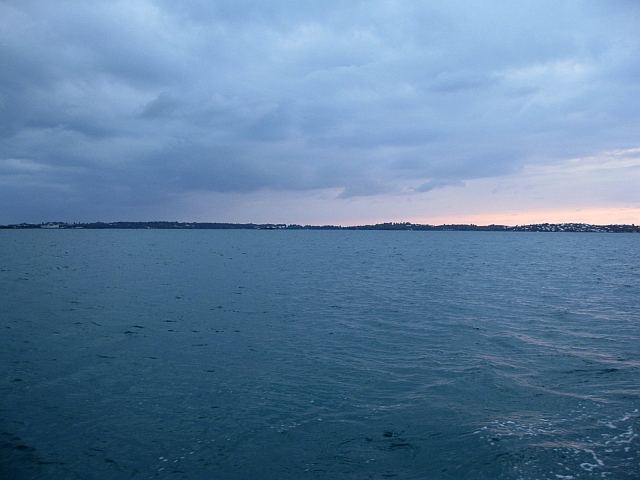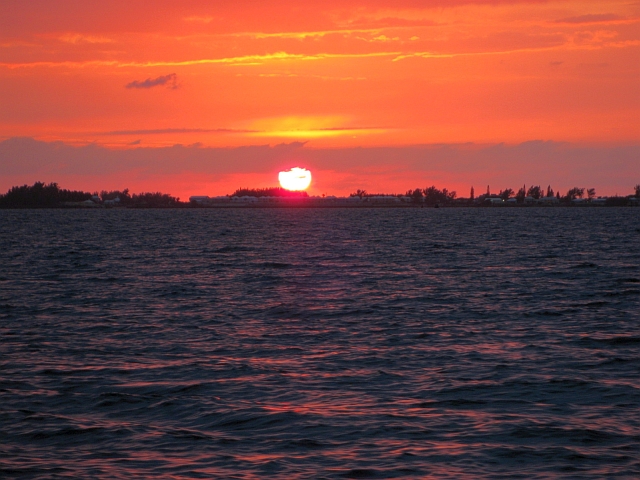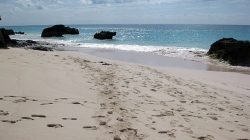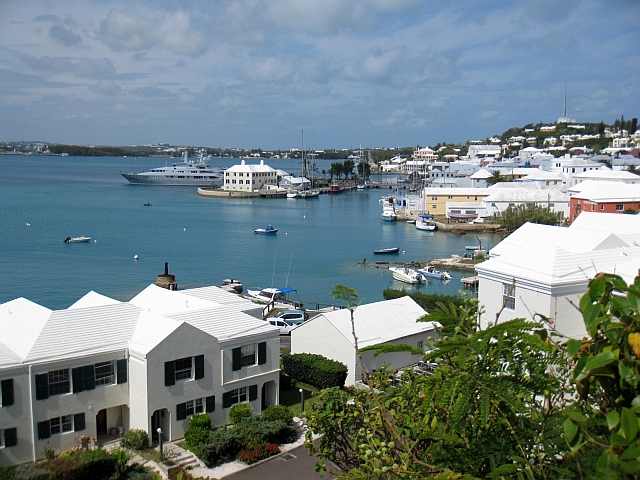
St. George’s Town and Harbor, Bermuda
This is Part 5 of my multi-part trip report series about our road trip and cruise to Bermuda. In Part 4, I covered our day (well, really more like half a day) at the Royal Naval Dockyard on the west end of Bermuda, along with our ride on a glass-bottom catamaran out to the (in)famous Bermuda Triangle. Today, with a full day at our disposal, we decided to head over to the far east end of Bermuda, to the town of St. George’s.
For the introductory post and full trip report index, click here.
Date of Visit: Monday, May 19, 2014
The forecast for Monday originally called for scattered showers, but as you can see from the photo above, they never materialized, and we were left with a sunny, 73-degree day. St. George’s is on the opposite end of Bermuda, approximately 39 km (24 miles) by road from Royal Naval Dockyard. If you’re not going as part of a tour group or hiring a taxi, by far the easiest way to get there is to use the public ferry system, which gets you there in 45 minutes. With the first ferry scheduled to leave at 9:30, we headed off the ship a few minutes before 9 and bought 2-day transit passes at the information booth (shack-like structure) at the end of the pier. There was no line, and we headed over to the ferry terminal, which you can see from the pier – and immediately noticed that the line snaked down the sidewalk for a good couple hundred feet already. It was all pretty painless, though. Boarding began about 9:25, and despite being pretty far back in the line, managed to easily find 2 seats together on the lower deck of the ferry. Exactly 45 minutes later, we arrived at the pier in St. George’s to begin our day.
The town of St. George’s (sometimes referred to as “St. George”) is a UNESCO World Heritage site, and is considered to be the oldest permanent settlement in Bermuda, and the oldest surviving British settlement in the new world. It was originally “settled” by Sir George Somers in 1609, when his ship, the Sea Venture, shipwrecked near what is now the town during a storm. It was permanently settled in 1609. Until the late 1990s, St. George’s was an important military defense outpost for the British, and was home to several batteries and fortifications in the immediate vicinity; I will discuss two of these, Alexandra Battery and Fort St. Catherine, in more detail later in this post. It is also houses outstanding examples of British colonial architecture, with many buildings in the town square still dating from the 17th and 18th centuries.
Upon getting off the ferry, you immediately see the World Heritage Centre museum. We didn’t visit it, but instead passed through the museum, turned right down Water Street, and headed through a collection of old colonial buildings to the historic town center.
Our first goal for the day was to search for sea glass, and some online research suggested that a good place to get some was Alexandra Battery Beach, about a mile east of St. George’s town. No buses serve that area, so to get there, you either have to walk or hire a taxi. Being such a beautiful day, we decided to walk. It takes 20-25 minutes at a leisurely pace, though be aware that the first quarter mile or so from St. George’s is a bit of a steep uphill climb. As you climb up the hill, you are afforded several excellent views of the town and harbor below, including the cover photo up top as well as this one below.
Sea glass is one of Bermuda’s most famous craft exports, and can be found on several of the nation’s beaches. “Sea glass” is actually nothing more than plain glass, mostly from discarded bottles, that gets washed out to sea, is weathered by the waves and water, and then is washed up back on shore in a smoother, polished state. Be aware that it is technically illegal to remove sea glass from Bermudian beaches, though honestly, I don’t understand why. It is, for all intensive purposes, garbage that is washed back onshore. But anyway, if you want to collect some, just take a few pieces, and don’t do something stupid like try to carry an entire bucketful back onboard your cruise ship. Yes, people have tried this, and as you can imagine, it doesn’t typically end well.
Anyway, our first stop was also our first sighting of one of Bermuda’s famous pink sand beaches – Alexandra Battery Beach. First, a couple of primers. Yes, the pink sand really IS pink; its hue is courtesy of a microorganism found in the water and coral reefs off the coast of Bermuda. Second, Bermudian beaches aren’t exactly like what you’d find here in the U.S. or the Caribbean. You won’t find multi-mile strands of unbroken sand. Instead, Bermuda’s beaches tend to be quite small – ranging from only a hundred or so yards long to maybe a mile – and are often found in sheltered coves. Alexandra Bay Beach is a good example of how this works.
As you can see, a few tourists had wandered over as we were leaving to look for sea glass, but its out-of-the-way location keeps this beach pretty uncrowded. The beach does have an important place in, interestingly enough, American history, as it was here that Sir George Somers took the remnants of the Sea Venture and launched the ship Deliverance, which was one of the ships that eventually landed in the New World to found the British colony at Jamestown, Virginia. Next door to the beach is the Alexandra Battery (more information can be found in the link for the beach). It is believed that this miniature fort was originally constructed in the 1840s, but was modernized in the early 1900s at the behest of the fort’s namesake, Queen Alexandra. The battery was used extensively during World Wars I and II. Little is left of the complex, though there are a few replica guns and cannons, and you can climb on top of the remaining fort building for a nice view of the surrounding area.
There is no charge to visit either Alexandra Battery or Alexandra Battery Beach.
After our visit, we headed north to Fort St. Catherine, a 20-25 minute walk from Alexandra Battery. Along the way, there are several opportunities for amazing photos of Bermuda’s volcanic coastline.
We also passed by a marker commemorating the 400th anniversary of the shipwreck of the Sea Venture, which is also considered the founding of Bermuda.
The fort actually comes into view shortly before you reach the 400th anniversary marker, in the first photo below. About 5 minutes after passing the marker, you pass by St. Catherine Beach (the second photo), a wide, white sand beach located directly adjacent to the fort. If you are coming here around lunchtime, there is also a small restaurant at the bottom of the hill across from the beach. We didn’t eat there, but I have read on other travel sites that it is pretty good.
NOTE: The fort is located at the top of a hill past the beach. It is a short walk, but rather steep. With the temperature only in the mid-70s on this day, it was a relatively easy walk, but might get a little difficult on a hot summer day. Carry a bottle of water. And better yet, the beach is an excellent spot to rest and cool off after finishing your visit at the fort.
There is a lot to see at the fort and I may end up doing a more detailed post later, but here is a short summary and a few photos. Fort St. Catherine was the first defensive outpost built in Bermuda, having been originally completed shortly after Sir George Somers’ arrival. It was subsequently rebuilt several times, most recently in the mid-1800s. The fort was abandoned in the early 20th century, but was turned into a museum and park in 1951, and has been refurbished since then. There are several replica rifled muzzle-loading guns on-site, along with replicas of the Bermuda Crown Jewels, historical exhibits, and old munition storage rooms and tunnels. You can also climb up to the ramparts on the upper level, where you can – sense a recurring theme? – enjoy terrific views of the surrounding coastline. The fort is open from 10-4 daily during summer, and Monday-Friday the remainder of the year; admission is $7 per person.
Replica of the Bermudian Crown Jewels
Old Munitions Store Room
Example of rifled muzzle-loading gun
Great view available from the top
We spent about an hour and a half at the fort before heading back to town. Instead of going back the way we came, we decided to return from the opposite direction, heading north before heading southwest back into town. Why north? About a 5 minute walk in that direction is the popular Tobacco Bay Beach, a popular pink sand beach and also an excellent spot for snorkeling, if that’s your thing. We didn’t visit the beach, but seeing the beautiful (if small) beach and lagoon was worth the short walk.
If you don’t feel like walking back to town – about 20 minutes away – there is a small beach bar with drinks and snacks, as you can see in the photo. You can also rent snorkeling gear if you didn’t bring your own.
To head back to town, continue a couple of hundred feet to the east, then head south on Government Hill Road (it is clearly marked as the way to St. George’s town). It is mostly downhill from Tobacco Bay, thus a much easier walk than if you’re headed to the beach. On the way, you pass through a very pretty park near St. George’s Golf Course, with plenty of large trees interspersed with grassy meadows.
As we entered the outskirts of town, we passed by the famous Unfinished Church. Work began on the structure in 1874, and it was intended to be a replacement for St. Peter’s Church (discussed later in this post). However, storm damage halted construction, and the building was never completed.
After lunch at the historic White Horse Pub & Restaurant (the subject of a future post), we walked across to Ordnance Island, which is the site of the St. George’s Cruise Ship Terminal (used only by smaller ships). Here, you can find a replica of the aforementioned Deliverance, which carried Sir George Somer’s men to Jamestown.
Our next stop was Their Majesties Chappell, St. Peter’s Church, the oldest surviving Anglican church in the New World, originally built in 1612. The oldest parts of the current structure date to 1620, though it has been expanded and refurbished several times since then. This church was to have been replaced by the Unifinished Church, but thankfully, a storm followed by a dispute with the church spared St. Peter’s from the wrecking ball. It is still in use today, and is open to visitors from 10-4, Monday through Saturday. No entrance fees are charged.
After a quick stop at the nearby Bermuda Perfumery to pick up some, ahem, perfume, we walked down to the bus stop to head back to the Dockyard. This method – take the ferry to St. George’s, ride the bus back – is essentially cloning what the cruise ship tours to St. George’s to, but at a fraction of the cost, and you can tour St. George’s at your own pace. Just be aware that you have to switch buses in Hamilton (take the #10 or #11 to Hamilton, then the #7 or #8 to Dockyard), and the entire trip takes about an hour and 45 minutes. Or you can take the bus only to Hamilton, about 50 minutes, and take the ferry from there (20 minutes to Dockyard). We did the bus the whole way, because we had one more stop scheduled for the day – the Gibbs Hill Lighthouse in Warwick Parish. The lighthouse, which began operations in 1846, is said to be one of the world’s oldest cast iron lighthouses, and you can climb 185 steps to the top for spectacular views of Bermuda. It is, however, a bit of a hike from either the Middle Road (Bus #8) or the South Road (Bus #7), as it involves an approximately 1 mile hike uphill. And much to our dismay, the lighthouse itself was closed, as it was being renovated and wouldn’t open until Thursday, two days after our departure. But, we were able to walk around the grounds for a minute, and with the vantage point at the top of the hill, got a good view of the town and cruise ships below and across the harbor.
We walked down to the South Road to catch the bus back to Dockyard, which turned into a bit of an adventure. The first bus that came by was full and wouldn’t let us get on, the driver promising that another bus was coming right behind him. “Right behind” in this case meant nearly half an hour. But it was all fine. It’s the islands, after all, so we took it in stride. After a quick freshen up in our stateroom, we headed back outside for our final activity of the day – the “Sunset Swizzle Cruise” short excursion. Basically, you go out on a small boat into the harbor to view the sunset while you’re provided unlimited rum swizzles (a Bermudian cocktail made with pineapple juice and rum) to drink. Good times, though the swizzles were pretty weak on the rum. And we were treated to a fiery orange sunset thanks to a few clouds and a shower in the distance – a perfect ending to a perfect day in Bermuda.
Like photos? Peruse many more on my Flickr album here.
In my next installment, I’ll cover our final day in Bermuda, with a visit to several of the country’s south shore beaches and the city of Hamilton.


